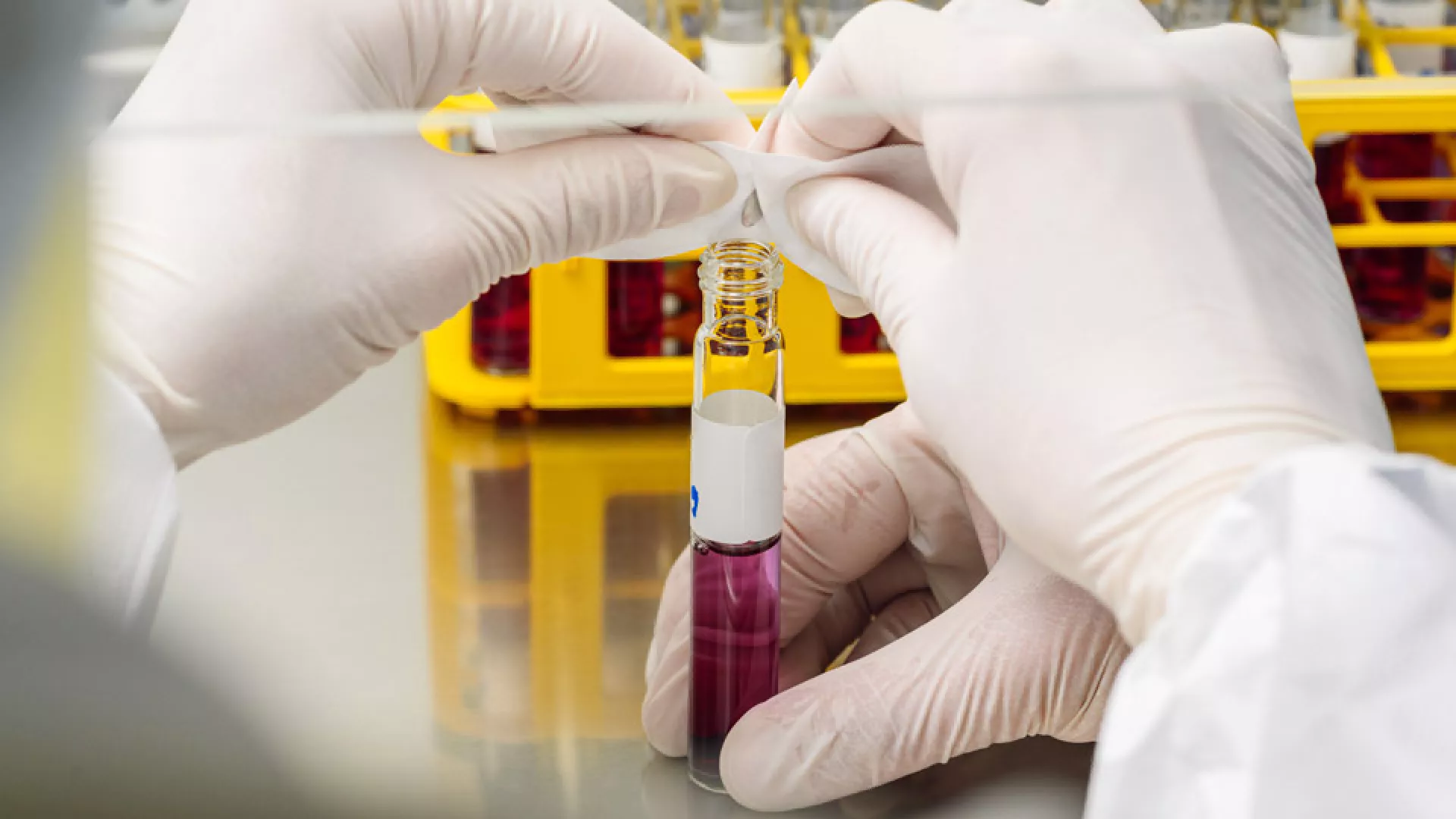The methods of spore counting and D-value determination are common practice to characterize and control the quality of biological indicators
Sterilization processes preceding the aseptic filling of pharmaceuticals must be proven to be highly effective (EU GMP, Vol. 4, Annex 1). Biological indicators (BIs) are used to demonstrate the efficacy of decontamination or sterilization processes.
Both sterilization processes in autoclaves and decontamination processes using vaporous hydrogen peroxide (H2O2) in isolators usually use spores of Geobacillus stearothermophilus. These spores are an appropriate model system due to their high resistance. Furthermore, Geobacillus stearothermophilus is cultivated at relatively high temperatures (55 - 60°C), which specifies the evaluation of the test.
BIs for decontamination processes consist of spore monolayers applied on stainless steel carriers. These carriers are sealed in Tyvek® envelopes for better handling. Although this membrane is permeable for H2O2, it provides a diffusion barrier for the spore-inoculated carrier (worst case scenario).
After the application, carriers are transferred from the Tyvek® envelopes to nutrient media. If no growth occurs after seven days of incubation, all spores on the carrier have been inactivated by the treatment process.

Transfer of spore carriers into nutrient medium
Decontamination processes are supposed to provide a 6-log reduction of microorganisms. To the deliver proof, a BI must be occupied with at least 106 spores.
Additionally, the spores should have a defined resistance. This resistance is prone to variations since spores represent a non-calibratable biological system. The D-value (decimal reduction time) can be used to determine a characteristic value for the resistance of a specific BI batch. D-values of different batches are comparable if they are determined in one and the same system. Moreover, this provides insights about the inactivation behavior of a batch and possible hyper-resistant BIs („rogue BIs“, „late survivors“, or „anomalous BIs“). A batch containing such indicators should not be used for validations, as this may produce false positive results.
DIN EN ISO 11138-7:2019-11 defines the modalities to determine of valid spore counts and D-values for the characterization and quality control of BIs.
Our isolator experts can optionally support you in the following topics:
Spore count
Spore count is determined according to DIN EN ISO 11138-7:2019-11: Sterilization of health care products – Biological indicators – Part 7: Guidance for the selection, use and interpretation of results (ISO 11138-7:2019); German version EN ISO 11138-7:2019, from four single samples using the heat shock method.
Determination of system D-value
The system D-value is determined following DIN EN ISO 11138-7:2019-11: Sterilization of health care products – Biological indicators – Part 7: Guidance for the selection, use and interpretation of results (ISO 11138-7:2019); German version EN ISO 11138-7:2019, from 30 sample groups, each with 10 or 20 single samples and a sampling interval of one minute.
The D-value is calculated according to the Limited Holcomb-Spearman-Karber Procedure (LHSKP) and is determined in a standardized system. Additionally, customers can choose from a set of predefined values of H2O2 concentrations and relative humidities to adapt the D-value determination as closely as possible to their conditions.
Spore identification by API 50
Spore identification is performed by means of a bioMérieux API® 50 CHB/E test. In parallel, KWIK STIK™ of the strain to be identified is entrained.
Initial qualification and quality testing of the BIs is performed in the ValicareLab using a pharma-grade sterilization isolator.
Please contact us in due time if you plan to use BIs for process development and validation of your isolator system. With a preliminary lead time, we can provide the necessary number of “qualified” ready-for-use BIs. In combination with a joint project, we will gladly take over complete review and characterization of your batch of BIs or supplement missing partial aspects.
Take advantage of BIs tested and characterized under real conditions in an isolator. If you also use H2O2 for decontamination in your isolator, you will get the D-value for your BIs reliably determined in your application scope together with a statement on anomalies.
This saves you a lot of time during process development and validation.












